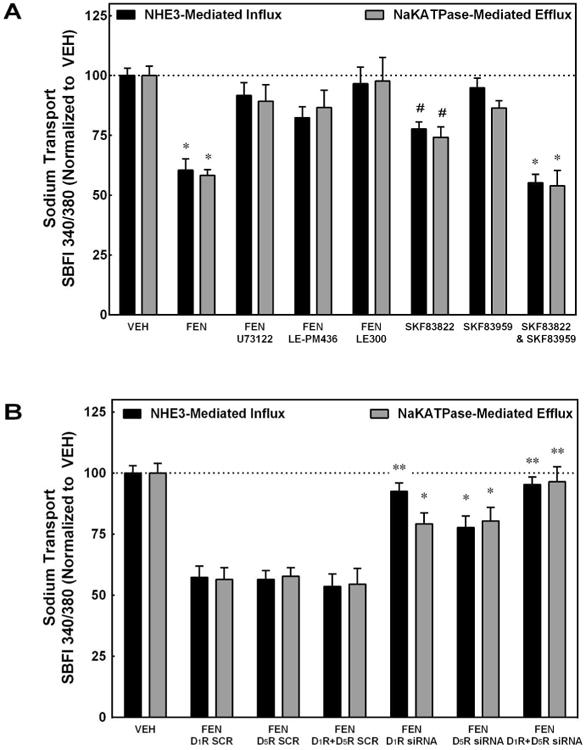Figure 6. Sodium Transport Assays.

PANEL A: The D1R/D5R agonist fenoldopam (FEN, 1 μmol/L, 30 min) inhibited both NHE3-mediated sodium influx and NaKATPase-mediated sodium efflux in immortalized RPTCs (*P<0.0001 vs VEH, N=6). The co-addition of U73122 (PLC inhibitor, 10 μmol/L), LE-PM436 (D5R-specific inhibitor, 1 nmol/L), or LE300 (D1R/D5R antagonist, 10 μmol/L) returned the sodium influx and efflux to VEH levels. The AC-specific activator SKF83822 (10 μmol/L, 20 min) inhibited both NHE3 and NaKATPase (#P<0.001 vs VEH, N=6). The PLC-specific activator SKF83959 (10 μmol/L, 20 min) did not inhibit either NHE3 or NaKATPase but the combination of SKF83822 and SKF83959 inhibited both NHE3 and NaKATPase and to a greater extent than SKF83822 alone (*P<0.0001 vs VEH, N=6). PANEL B: The FEN-mediated inhibition of sodium efflux can be partially reversed by siRNA specific to D1R or D5R, or fully reversed by the combination of D1R and D5R siRNAs (*P<0.05 vs SCR, **P<0.001 vs SCR, N=6). D1R siRNA alone reversed sodium influx as effectively as the combination of the D1R and D5R siRNAs.
